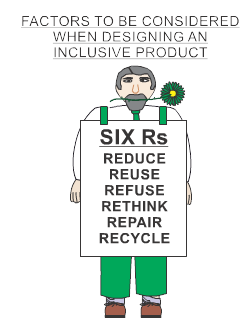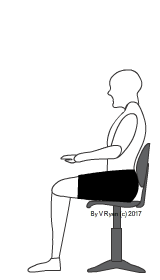V.Ryan © 2017-2019

ENVIRONMENTAL ISSUES: Inclusive design may also be designed to be environmentally friendly. A product that is simply discarded at the end of it’s life time, may not attract customers who prefer to recycle and are environmentally friendly. This factor may influence the materials used in the manufacture of the product and the manufacturing processes. For instance, biodegradable materials simply dissolve into the environment harmlessly. These materials are suitable for the manufacture of some products, making them more attractive to environmentally friendly customers.
An example of this is disposable cutlery. These are throw-away items that pollute the environment. However, a range of environmentally friendly cutlery exists, made from processed corn starch, that decays harmlessly after a few several weeks buried in soil (such as a landfill site). Both types of cutlery perform the same job but only one type will attract environmentally friendly customers.


For example, the computer / office chair seen opposite. The chair can be adjusted in terms of its height, so that it can be used by children and adults. It can also be ‘swivelled’, so that turning around is easy. Chairs like this usually have wheels or rollers, which means they can be moved with ease, even when someone is sat on the chair. People with mobility problems, may prefer this type of product.
Chairs like this can be used in an office, a computer room and many other situations, again building in a level of inclusivity.
